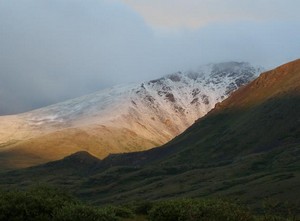
For eight days in a row monsoonal flow fed thunderstorms have struck Thornton and Tuesday night brought arguably the best show yet. Heavy rain, hail, gusty winds and an extraordinary amount of lightning roused residents soon after nightfall.
Storms initially formed in the afternoon and were focused south of Denver in Elbert County. Near Kiowa, Elizabeth and Agate hail up to 1 3/4” in diameter was recorded. The slow-moving storms deposited as much as five inches of rain near Agate. Three twisters were reported in Elbert County but no damage was realized.
It appeared for a time that Thornton was going to escape the intense weather but once the sun went down the picture changed dramatically. Seemingly out of nowhere a storm cell popped up at around 9:20pm and moved across the north Denver metro area.
- Don’t get caught off guard by the weather! Be sure to follow us on Twitter and ‘like’ us on Facebook for all the latest weather news!
Heavy rain fell across a large part of the area from downtown northward to Thornton. 1.76 inches of rain was recorded north of downtown Denver at DenverWX.com as the storm passed through.
Street flooding was reported across the surrounding areas causing difficulty for motorists.
Here in Thornton we were pounded with heavy rain and a great deal of pea-sized hail. ThorntonWeather.com recorded its first inch of rain in only 14 minutes and the storm total for the overnight storm was 1.90 inches.
Strong winds also brought down trees and power lines knocking out power to nearly 10,000 Denver area residents including some in Thornton. Xcel Energy reports power has been restored to most areas this morning.
Denver International Airport recorded a thunderstorm wind gust of 66mph shortly before 10:00pm. A ground stop was issued and all flights were temporarily delayed while the storm moved through.
Forecasters had predicted a late and shorter than normal monsoon season due to La Niña’s lasting effect – that however has not proven to be true.
Monsoonal flow pulling in moisture from Mexico started earlier than normal this year. Tuesday marked the eighth straight day for thunderstorms in the Denver metro area and the current weather forecast has at least a chance for storms through the weekend.
To date Thornton has recorded 4.22 inches of precipitation during the month of July. This far exceeds the Denver historical average of 2.16 inches for July and with the month less than half over, chances are we could achieve ‘top 10 wettest’ status by the end of the month.






 Change is of course the one constant in Denver’s weather but come July, things actually get pretty consistent. The standard formula for a day in July is a sunning morning, clouds developing in the late morning and early afternoon. Come mid-afternoon, thunderstorms are rolling off of the foothills and into the metro area and the eastern plains. These storms do occasionally reach severe status containing hail, gusty winds and heavy downpours of rain.
Change is of course the one constant in Denver’s weather but come July, things actually get pretty consistent. The standard formula for a day in July is a sunning morning, clouds developing in the late morning and early afternoon. Come mid-afternoon, thunderstorms are rolling off of the foothills and into the metro area and the eastern plains. These storms do occasionally reach severe status containing hail, gusty winds and heavy downpours of rain. This is beginning to sound like a broken record – pun intended. 🙂 As for Tuesday our streak of consecutive 90 degree days hit 17, moving us into a tie for second place. Assuming today reaches 90 degrees or more – and it almost certainly will – we will then tie the record that has been set twice previously (in 1901 and 1874).
This is beginning to sound like a broken record – pun intended. 🙂 As for Tuesday our streak of consecutive 90 degree days hit 17, moving us into a tie for second place. Assuming today reaches 90 degrees or more – and it almost certainly will – we will then tie the record that has been set twice previously (in 1901 and 1874).